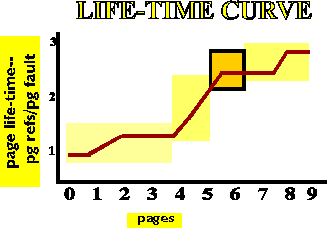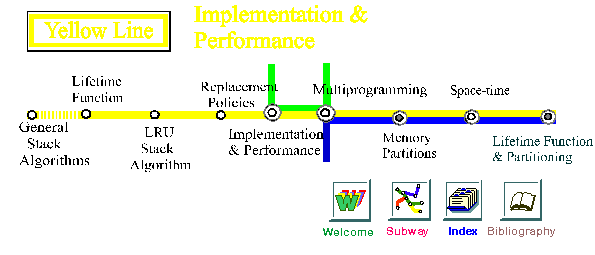Lifetime Function: the KNEE




If the number of pages allotted to a process is approximately the size of the locality set, the lifetime of a page extends to the lifetime of the process and will not increase further. As the graph shows, when enough page frames are allotted to a process to accommodate the all of the pages being used by the process over the time interval surveyed, then the lifetime curve levels off. This section of the lifetime curve where the shape of the curve changes from sharply increasing to level is called the knee. A reference string that spans more than one locality set may have more than one knee, but the most prominant one is considered the primary knee. Denning [D3] defines the primary knee as the point that maximizes the value of the ratio of the pages allotted to the lifetime (L(m)/m) and cites studies that associate this point with optimal performance.
